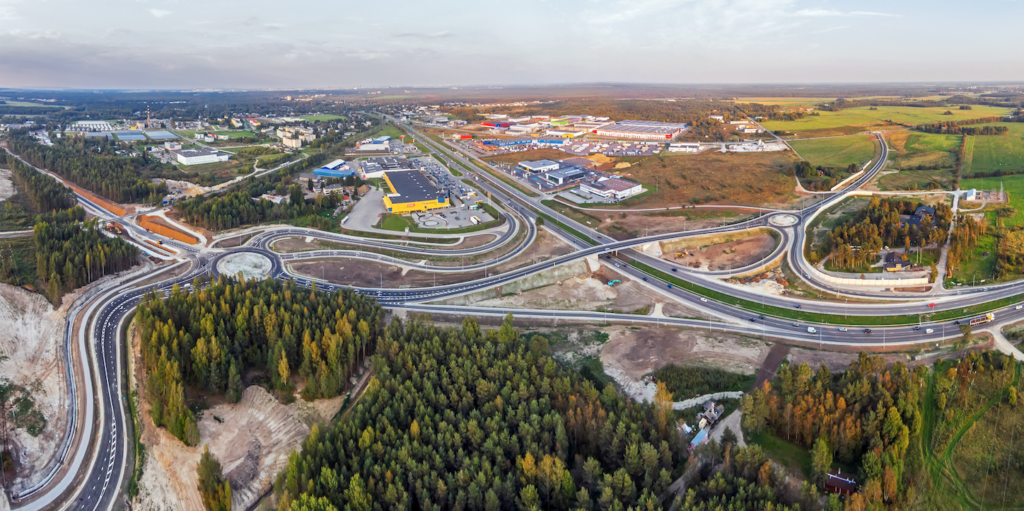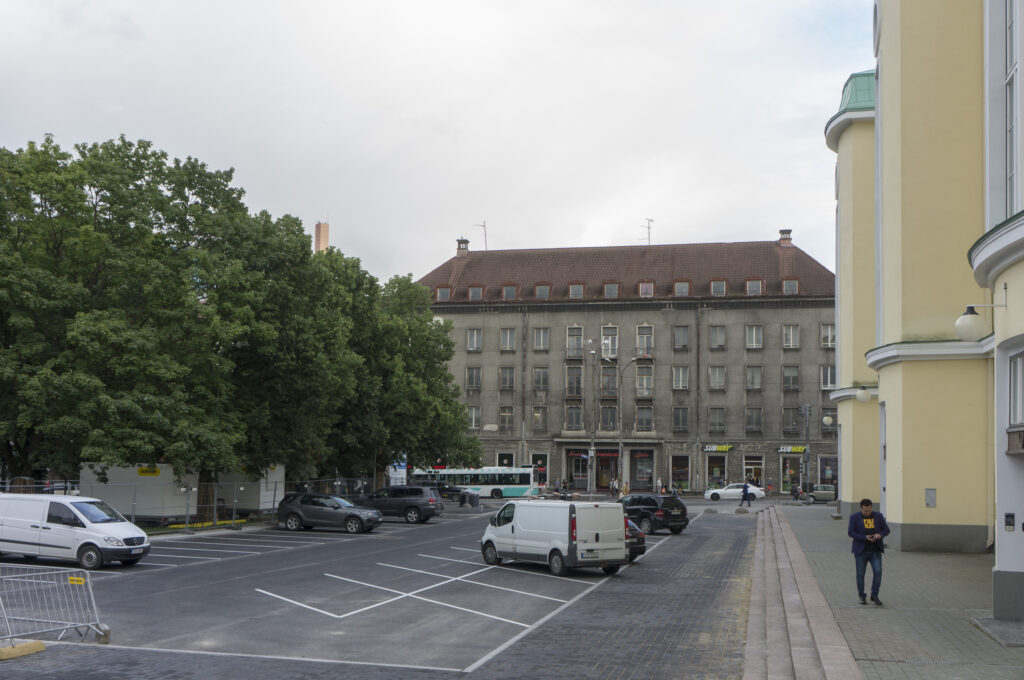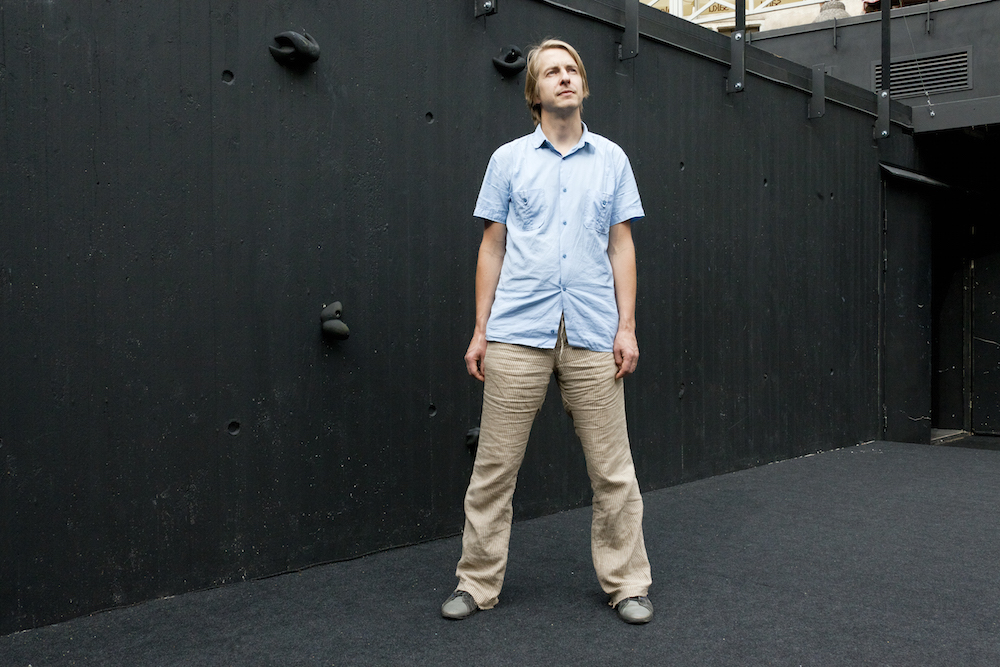Interviewed by Kaja Pae
What are the most critical issues of spatial design in Estonia?
In my opinion, the most critical issue is the arbitrariness of spatial design – there is a widespread misconception that spatial design is restricted and regulated by the Planning Act and Building Act, that only planners and architects are responsible for our living environment. In fact, only a small part of the factors shaping our environment are covered by the Planning and Building Acts. In all other areas, spatial design takes place unconsciously – there is even no such question whether the decision will have any impact on our living environment. Therefore, architects and planners can assume responsibility only for a small fraction in the spatial design.
Even in planning, including communication with state authorities or private owners, the local governments often find themselves stuck as in many respects there is no occasion or basis for demanding better planning solutions, there is practically no opportunity to direct the development.
Spatial design is an area requiring specialists with particular education – architects, landscape architects and planners, why not also geographers and urban designers. The decisions regarding built environment and living environment have a highly extensive and long-term effect and they are often accompanied also by considerable expenses. Therefore, it is important to increase assurance that the choices made are at a high level and in keeping with the long-term goals.

Which questions require a national spatial policy?
It is important to enhance the cooperation between state authorities for the improved use of the present competences and the implementation of state plans and strategies. Similarly, the state’s requirement for the state institutions and state-owned enterprises could be improved by making the improvement and maintenance of living environment as one of their goals. In addition to the above, we should find a way how the impact of the decision on the environment would be acknowledged already in the initial decision-making stage and at the highest level. Apparently, it is not always possible to make decisions that are ideal from the point of view of spatial design, however, in such cases it would be particularly important that somebody from the state establishment could explain the respective considerations also to the professionals.
In connection with the administrative form, a regional board will be established to replace county governments and deal with the organisation of spatial planning and regional development, and the given institution will also monitor the local governments. In the alteration and renewal process, we should not forget to increase the spatial design competence.
It is important to ensure that the rental housing, state secondary school as well as state building programmes would advance our living environment at large and support the local communities. In planning the constructions, we should stop rushing and refrain from so-called cheap procurements – it does not ensure faster results, instead, it only brings about further problems. Compared to Nordic countries, we spend considerably less time on design work.
From the point of view of rural life, it is important to manage logging and nature protection so that it would be more considerate of people’s homes. The State Forest Management Centre RMK has taken the first steps in cooperating with local communities, but it should become a common principle that there is generally no clearcutting in the recreational areas of the residents and holiday-makers, similarly in the immediate vicinity of housing areas. The aim of the maintenance of state land requires some specification so that it would be considered as a resource ensuring a public good and interest. Road construction and local streets may be the main or only activity of a particular area that considerably changes the environment or creates the local identity. It’s a pity if the opportunities are not taken.
The general problem seems to be the fact that spatial design consists of numerous small fragments of various sectors, much like the squares of Rubik’s Cube, which from the perspective of spatial design should form a nice comprehensive whole while each piece is simultaneously also a part of some other facet or whole. In case each facet of the cube is operated by a specialist of a particular field and instead of a cube we have, for instance, a hexagon, there is an imminent need for someone to consider the movements from the point of view of the comprehensive whole.
We have good examples when instead of constructing a new building, the state invests in renovating buildings with historic architectural value thus addressing two objectives at the same time. Naturally, when considering only the aspect of energy efficiency, such a solution is financially more expensive for the state, while on the whole it is still more beneficial. The same applies to the construction of state buildings. Instead of selecting a suitable location among the plots owned by the state, it would perhaps be wiser to consider buying land in the best location, if it was more feasible in the long run. And I don’t mean direct benefit, but rather somewhat wider socio-economic benefit for the living environment.

Which changes in the Estonian spatial policy would be prioritised and more easily implemented?
I would bring out two changes – in practice, it would be easy to complement the state requirements for the state institutions and enterprises pursuant to the spatial design objectives. It would also be easy to make it mandatory that architects/landscape architects and the wider public be included in the planning of street and road projects.
How would you state in clear terms what kind of value is generated for the society by the national spatial policy?
National spatial policy will presumably make Estonia a better place to live and work in – the talents will stay or return here and we will be more attractive to others who we are expecting here: investors, tourists and clever people. Making more informed decisions regarding space will keep our homes safe, maintain values and also give us financial savings. Thoroughly reasoned spatial decisions will improve people’s welfare, make Estonia more competitive as a place of residence and location of workplaces compared to other countries, and the examples of other countries suggest that they also boost economic growth. However, the implementation of the spatial policy requires competence. The task of the spatial design expert group is to analyse these and also other statements and prove the benefit of possible spatial design changes to the society.
Which peculiarities and values of the Estonian space would you highlight? On a larger scale, the true value of spatial design does not lie merely in solving problems but also in delineating the unique opportunities. What are the most interesting opportunities in Estonia that the national spatial design could consider and implement?
The spatial design expert group will probably not reach the given issues as the term of appointment of one year is clearly too short. However, there is no way round the peculiarities of our judicial area of spatial design and the identification of the respective drawbacks and opportunities. The judicial area must correspond to the expectations for the actual space and allow specific solutions. I have worked in two local governments – in the smallest one on Kihnu island and the largest one in Tallinn – and I have a pretty good understanding of how hopeless it is to operate according to the same laws, yet, we have to.
Estonia is small – small enough to allow us to properly include all interested parties and consider their opinion, only this will ensure results that meet the needs of the users. The smaller the place, the more important it is to consider all single spatial decisions. Compared to Nordic countries, we are poor – in order to stay here, the young generation of Europeans must have at least comparable living environment including the important component of spatial environment with all its possibilities.


There are several common spatial issues in many local governments that are too complex for their architectural or planning departments to handle. Similarly, there is no reason to reinvent the wheel in every local government. It would be reasonable to look for solutions on the state level. Then again, vast majority of the land in cities and towns are owned either by private owners or local governments, and also the comprehensive and detailed plans are processed and adopted by local governments. How could the spatial design work decided on the state level be taken flexibly to local governments so that they would have the interest and opportunity to implement it? In other words, what would be the toolbox to help the execution of the national spatial policy?
I agree that in order to reach a better living environment, we need more strategic planning tools. At present, the planning activities on the state and local level are indeed strictly separated and structured with various types of planning, and state interference, including providing help in the planning activities on the local level, is avoided. The state (county governments) is not generally engaged in advancing the improved implementation of state development plans and strategies on the local level.
I don’t think that local governments alone should have extended powers to make decisions in directing the spatial development, however, in cooperation with the state, the local governments could have more rights, for instance, to prefer certain developments on the basis of public interest that promote the development of a compact urban environment, avoid burdening the area with further traffic, enhance sustainable modes of travel or provide affordable housing etc.
*
What is the spatial design expert group?
The aim of the spatial design expert group is to analyse the national spatial development and elaborate the policy proposals for the improvement of spatial development presented to the government. Spatial design is either a conscious and purposeful activity or a random outcome brought about by the achievement of another aim. With the aim of the expert group, we wish to increase the awareness and quality of spatial design and improve cross-sectional cooperation.
The establishment of the spatial design expert group is based on the government’s action programme stipulating the convergence of the nation-wide spatial design competence into the cross-ministerial expert group in cooperation with the Association of Estonian Architects. The work of the expert group began in July 2017 with the duration of 12 months. It is coordinated by the Government Office in cooperation with the Ministry of Culture. The expert group includes the representatives of professional associations, universities and ministries.

JAAK-ADAM LOOVEER is a graduate of Architecture and Urban Design at the Estonian Academy of Arts who has worked as an architect both in private and public sector. At present, he works as an urban planner at the Chief Architect Office of Tallinn City Planning Department, and since July 2017 will lead the Spatial Design Expert Group at the Government Office.
PHOTOS of Jaak-Adam Looveer by Mark Raidpere
PUBLISHED: Maja 91 (autumn 2017) with main topic Shared Space





